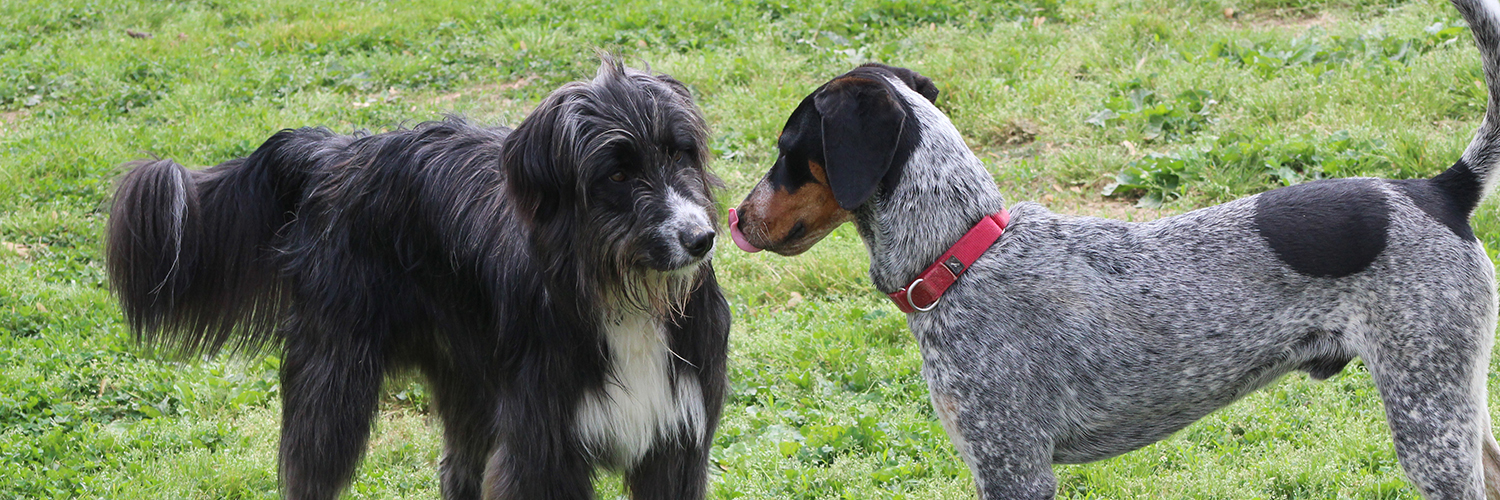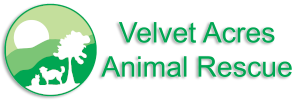
Congratulations on your new four legged family member! We know it’s tempting to immediately put them together with your current pets and wait to capture those picture perfect moments but odds are, none of your furry family will take that very well. Just like any new relationship, animals take time to get to know one another and there are steps you can take to help ensure they start off on the right foot and set everyone up for success.
If you haven’t already, please read through the Two Week Shutdown page and familiarize yourself with that content before reading further. This section references that content often.
Take it slow
Your current dog/s may be a little stressed about suddenly having a new dog in their space and having to share their home, including their human family. Your new dog has no idea what is going on, where they are, or who these new dogs are. Time is the most important thing to help everyone adjust.
- Keep play sessions short. Play time between the dogs should be kept to no more than
10-15 minute sessions with an adult actively supervising. Watch for stressed and
anxious body language (tail tucking, yawning, one dog constantly running away or hiding from the other with no role reversal) and stop the play session as soon as you see any of those signs, even if it’s only been a couple minutes. Gradually work up to longer play sessions as the dogs are playing well with neither showing signs of stress. Adding 5 minutes at a time is a good starting point. If at any time, either dog shows signs of stress, stop and make sure the next session is shorter.- It’s a good idea for the new dog to have a leash attached to their collar during play time so they can easily be led away and play can be interrupted if necessary.
- Corrections are OK! Dogs communicate among each other with both vocal and non vocal signals. While it is a little scary to see teeth and hear snarling or growling, these are ways dogs communicate and are commonly used to “correct” offensive behavior in another dog. NEVER punish a growl, snarl, or baring teeth. That leads to much more severe behavior without an obvious warning sign. Be mindful of size and age differences, as well as any resources in the area (see below for more on resources). The presence of resources or large differences in size and age of the dogs can lead to more intense communication methods among the dogs. High pitched squealing, whining, yelping, and sudden barking/growling is often an indicator that someone has gone too far with playing and hurt the other dog. They need to communicate that! (This is also why close, active supervision is absolutely necessary for the first couple weeks, minimum, of interactions and play sessions.)
- If you are seeing/hearing a lot of growling and bared teeth, these can be signs of overstimulation and stress, meaning it’s time for a break.
- Take walks together. Walking is a great bonding activity for dogs. It teaches them to relate to other dogs without constantly being on top of one another and rough housing or playing. This is especially good for puppies and young dogs who tend to constantly want to play and be all over other dogs and haven’t learned boundaries yet. Do not allow the dogs to play, jump, or mouth on one another while on walks, doing so can lead to them getting tangled up with one another and may cause a fight when they can’t get away from the other dog. Additionally, sniffing is an amazing mental exercise that helps burn up excess energy. Think of sniffing as a dog’s way of checking the news or social media. A good “sniff-fari”, where your dogs are allowed to follow their nose without being rushed along, is recommended at least once daily. Normal walks can be stifling and frustrating for dogs when they can’t investigate the smells along the way.
- Work on training. Odds are, the dogs already in your home know a lot more cues and behaviors than your new dog. Work with your other dogs in the same area as your new dogs’ safe zone, ideally so that your new dog can see what you all are doing without having access to be in the middle of the action. After a few minutes, switch who you are working with. Either go in the new dogs safe zone or let them out and block your other dogs from being in the area with an x-pen or baby gate so the new dog can work with you uninterrupted. This is allowing the dogs to get used to one another without directly interacting and helps them relate to other dogs in a different way than play time.
Be mindful of resources
A resource is anything that a dog values. The things we normally think of as resources are food, treats/chews/bones, bedding (or a favorite spot to lay), toys, and humans. But be aware that anything can be considered a resource to a dog and it varies depending on the dog. (For example, one of our founder’s dogs will dig holes and guard them from other dogs, the hole is a resource to him. He also guards water from other dogs, whether in a bowl or bucket or baby pool.) Guarding behavior includes but is not limited to, staring with hard eyes, freezing, growling, snapping, and lunging.
For the first two weeks, minimum (maybe longer depending on the dogs), it is a good idea to remove any toys, treats/chews/bones, or bowls from the area when the dogs are spending time together, playing or just hanging out. Feeding should also be done in separate areas (the new dog should be fed in their safe zone). Chews/bones and any treat that will not be gone in 2 seconds or less should also be given in separate areas, when there is a physical barrier between the dogs. This helps ensure that no one feels threatened or the need to guard their resource from the other dog/s.
- YOU know your dog. If there is something that they are known to guard, this item or category of items should be kept out of sight and put away during all dog-dog interactions, likely for much more than two weeks, maybe even for life depending on the dog and severity of the guarding behavior.
- If your new dog is a puppy and your current dog has no known guarding behaviors, you may be comfortable testing the waters with some of these resources right away. Toys are a good option to have around to distract puppies from pestering other dogs. Always make sure that there are numerous toys of varying types so that there is less likelihood of fighting over one specific item.
- It is always recommended that high-value, long lasting items such as stuffed Kongs or other food toys, bully sticks, tendons, bones, and the like ONLY be given when the dogs are separated. Food items are the most common resource that dogs guard and are the cause of most fights between dogs in the same household. Allowing dogs to constantly take these items from one another, even if it seems like they swap or “share” well, is not recommended. This can lead them to develop the urge to guard that item from other dogs because it is constantly taken from them and they don’t get a chance to chew uninterrupted.
And finally, these are general recommendations! Every dog is an individual and behaviors are fluid, capable of change over time. You know your dog, but you don’t know your new dog yet and their behavior may change from what was seen in their previous living situations. It is always better to err on the side of caution which is why some of these recommendations seem a little extreme or restrictive.
Please reach out to us at contact@velvetacres.org with any questions or concerns regarding your new furry family member and their progress adjusting to your home and existing family members!
